Endangered species: The last animals of their kind

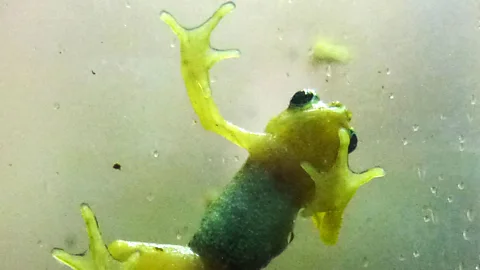
What are the rarest creatures in the world? This is a surprisingly difficult question to answer, but there are a few likely contenders, finds Rachel Nuwer.
Although she didn’t let on that anything was wrong, by the time the leaves began to change Suci’s keepers knew she was in trouble. The Sumatran rhino had dropped too much weight over the summer. By December, she had stopped playing with her toys and became even more reclusive and lethargic.
For nearly a decade, her keepers at Cincinnati Zoo had watched her grow. They had big plans for her. Suci, whose very name means ‘sacred individual’ in Indonesian, was to be a saviour of her species. There are only around 100 Sumatran rhinos left, so a plan was hatched to mate Suci with her brother Harapan to increase their species’ count. But now, she had iron storage disease, a condition that also killed her mother.
Hope that she would pull through came to an end one Sunday in March. Her keepers noticed that she was behaving oddly that day, so stayed with her into the night, and watched as she slipped away.
“I don’t know of anyone who’s tried as hard as we did to cure a rhino of this disease,” says Terri Roth, director of the Center for Conservation and Research of Endangered Wildlife at the Cincinnati Zoo and Botanical Garden. But still, she says, “You can’t help but feel responsible that you were not able to save this animal.” Suci, she explains, was one of the few promising females left for breeding. Others are too old or haven’t been able to get pregnant. Even wild females are turning up infertile.
“Animals die, animals get injured,” says Roth. “But when you’re down to 100, it’s far more than an emotional loss.”

The Sumatran rhino is one of the world’s rarest animals, but the bittersweet news is that we can at least identify that the species is in need of our help. For other endangered animals, it can be more difficult. Protecting the world’s rarest species from extinction first requires identifying which creatures belong in this grim category. Yet answering this simple question can prove more difficult than it might seem.
First off, there is a difference between population numbers and conservation status, as reported by something like the International Union for Conservation of Nature’s (IUCN) Red List – the world’s most comprehensive database on the subject. In theory, conservation statuses are based on pure science, but in reality human subjectivity can come into play. “The listings can be incredibly political, and very emotional,” says Lisa Campbell, the Rachel Carson associate professor of marine affairs and policy at Duke University, in Durham, North Carolina. Deciding whether to list an animal as critically endangered or just vulnerable could make or break funding for that creature, so there is a tendency to lean toward the direst possible listing.

Additionally, simply listing a species as critically endangered doesn’t mean its rarity or chance of extinction is equal to all other creatures that share that status. Existing protection measures, types of threats, dispersal and genetic standings can all influence a species’ likelihood of actually kicking the extinction bucket. Numbers can vary widely, too. Critically endangered hawksbill turtles currently number in the thousands, whereas fewer than 100 critically endangered Seychelles sheath-tailed bats still exist in the world. “One criticism is ‘how can those be equivalent things?’ There’s no good answer to that,” Campbell says.
So while no one is arguing that endangered species lists are bad things, if you want to identify the rarest animals on earth, it’s better to go by absolute numbers alone.
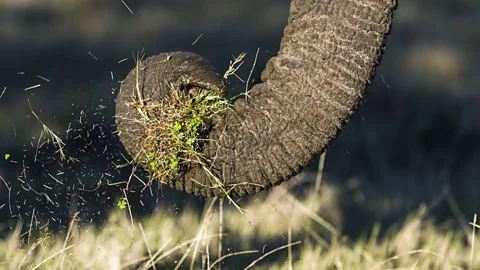
In some cases, counting the total number of animals in a population can be easy. Researchers know every single remaining black stilt in New Zealand, for example. Those 27 birds are tagged and recognised like well-known friends. In other cases, it is straightforward to count the animals, such as by flying overhead to tally up African elephants. Often, though, they are stuck with less reliable methods of estimating population, such as analysing scat, counting nests or setting up camera traps. “There’s a whole bunch of species where we know there’s five, 20 or 100 individuals,” says Mike Hoffman, senior scientific officer at the IUCN’s species survival commission. “But there’s a whole bunch of others that we know are highly threatened and declining quickly, but we don’t actually know what their exact population size is.”
“So you can come up with a list of species that are perilously close to extinction,” he says, “but it wouldn’t necessarily be the complete list.”
Some of the species that we do know enough about to say are among the world’s rarest include the Javan rhino, already extinct in mainland Southeast Asia and currently holding out with as few as 40 individuals; the Hainan gibbon, confined to a tiny patch of forest on China’s rapidly developing Hainan island and numbering 23-25 individuals; and the Yangtze giant soft shell turtle, down to only four living individuals.
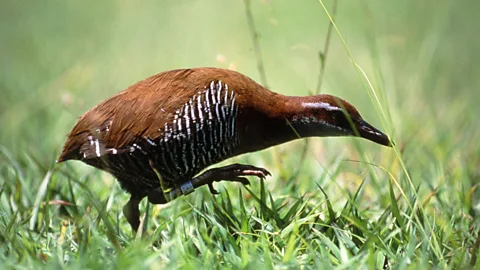
Very rare species may also persist only in captivity. The Red List currently reports 32 such species. Those species – including the Kihansi spray toad, the Socorro dove, the Guam rail and the Hawaiian crow – are strong contenders for title of rarest animal.
Sometimes, attempts to return these animals to the wild prove successful, as in the case of the black-footed ferret, the California condor, the Przewalski’s horse and several others. While still listed as endangered, those animals are at least playing functional roles in their environments. In other cases, however, things don’t go as well.
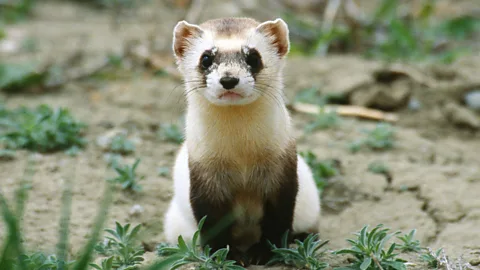
Despite best efforts, the species might not breed or survive well in captivity (as in the case of Suci), or there may just be too few individuals left. Such was the case for the Po’o-uli, a handsome Hawaiian bird whose last known individual – a lone male for whom researchers never found a mate – died in captivity in 2004. “That was it – the end of the species,” Hoffman says. “It was a case of too little, too late.”

Another problem with identifying the world’s rarest animals is the difficulty often associated with seeking out the rarest of the rare. Exceptionally scarce animals can be so elusive that scientists sometimes lose track of them altogether. This might lead to their being declared extinct, only to reemerge years later. Recently, for example, the Hula painted frog – presumed extinct – hopped out of hiding in Israel after a more than 50-year hiatus.
Prematurely declaring a species extinct can help push it over the edge to actual extinction. Budgets and conservation planning often revolve around a species presence or non-presence in an area. If it’s listed as officially no longer existing, then no help will come for any lone holdouts. “One of my colleagues here coined term ‘the Romeo effect,’” says Stuart Butchart, head of science for BirdLife International. “It means you give up on a species and stop trying to apply conservation measures, but it does still exist.”
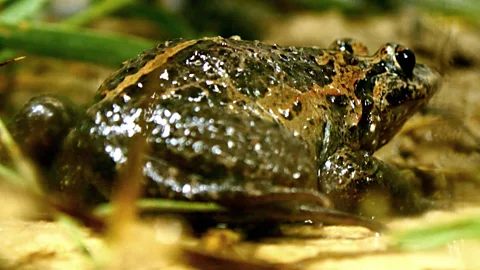
Because of this problem, scientists who determine conservation status listings are not quick to declare extinction, even if that might very well be the case. Miss Waldron’s red colobus has not been spotted since 1978, for example, but it is still listed as critically endangered on the Red List, with the hope that a few of those animals might be hiding out in a remote corner of the Ivory Coast jungle. Likewise, BirdLife International estimates that one to seven Oahu alauahios still survive in Hawaii, despite none having been officially sighted since 1985. “Some of these animals flagged as possibly extinct could very well be the world’s rarest animals if they still exist,” Hoffman says.
Another flaw in the list of potential rarest animals on Earth is the fact that mammals, birds and reptiles dominate it. Invertebrates, fungi and many ocean-dwelling creatures are conspicuously missing simply because their global populations and conservation statuses have never been assessed.
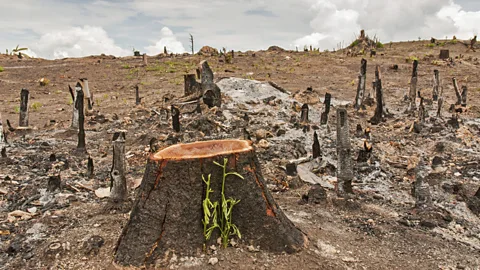
The IUCN has evaluated 71,576 species out of what some researchers estimate to be 8.7 million. The organisation plans to increase that count to 160,000 by 2020, but that’s still just a fraction of the world’s total biodiversity. “Defining the rarest animal on the planet would imply surveying the entire potential distribution range of every single species, and being able to count every single individual – a formidable challenge,” says Markus Gusset, chief conservation officer at the World Association of Zoos and Aquariums.
This means that the world’s rarest creature could in fact be some ultra-obscure beetle whose jungle plot is currently being mowed down, or an unknown crustacean whose estuary home is quickly being drained. It’s simply impossible to know for sure.
The good news, however, is that conservation measures to protect better-studied species often benefit those the spotlight evades as well. According to BirdLife International, important bird areas, for example, fortuitously overlap with 80% of the areas identified as critical for amphibians, fish, invertebrates, plants and other life forms. This is where a species conservation status arguably becomes most important: as a tool for encouraging countries to step up and protect an endangered species before it is too late, and in so doing to also shield an entire ecosystem. “We have the knowledge and the tools to protect these species,” Butchart says. “We just need to implement them.”
